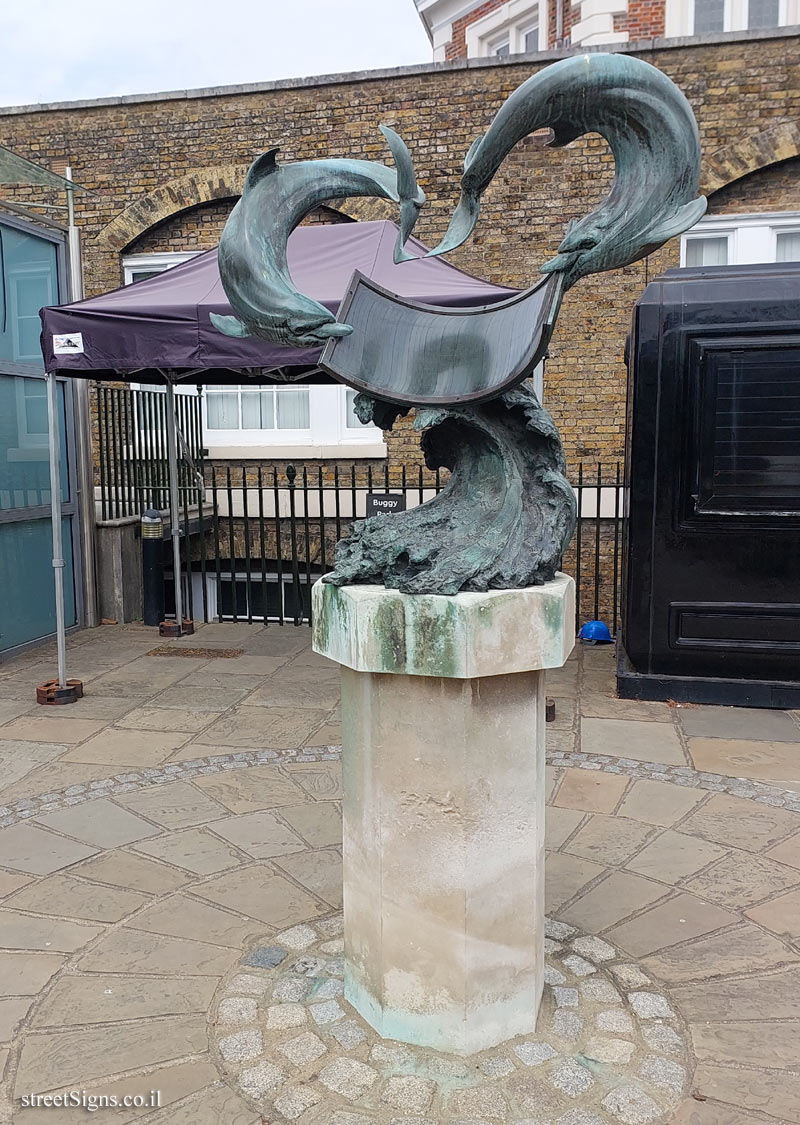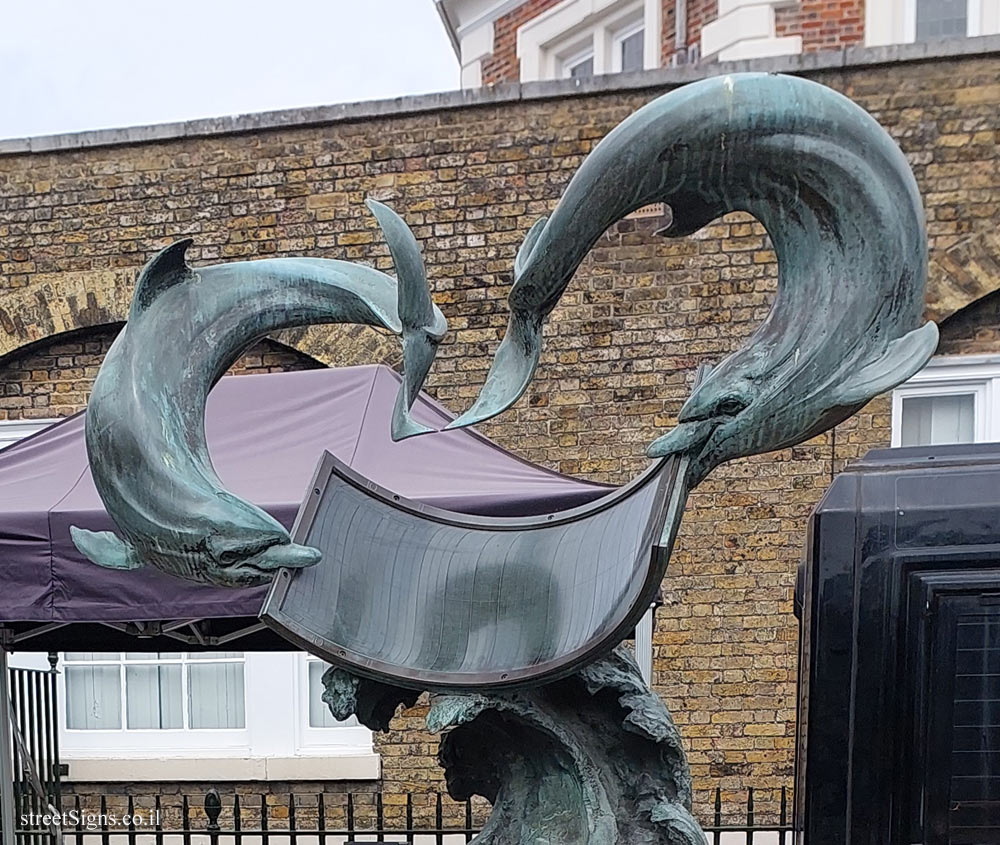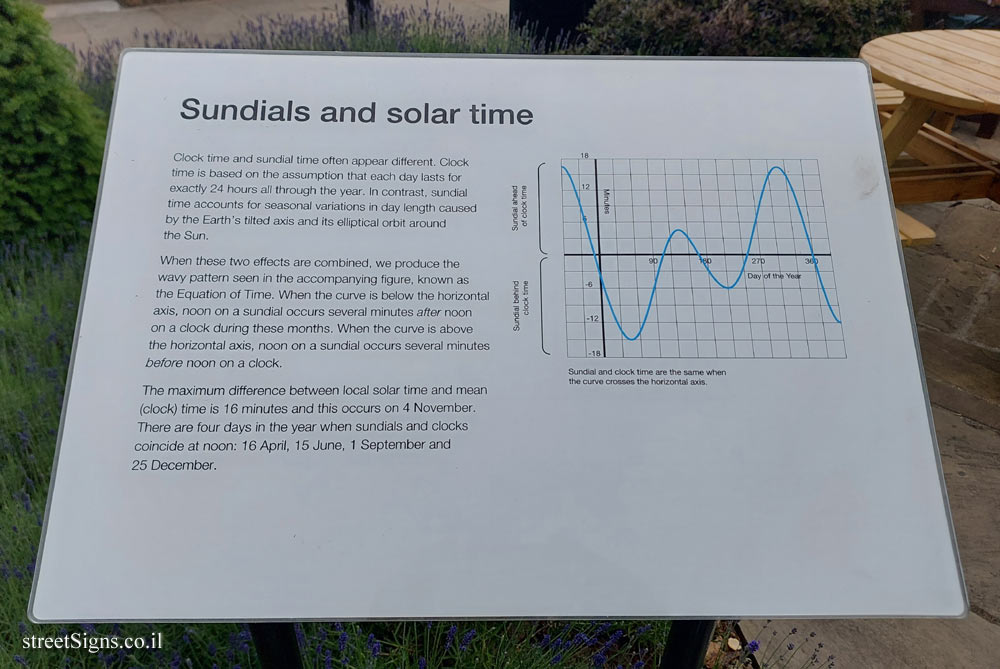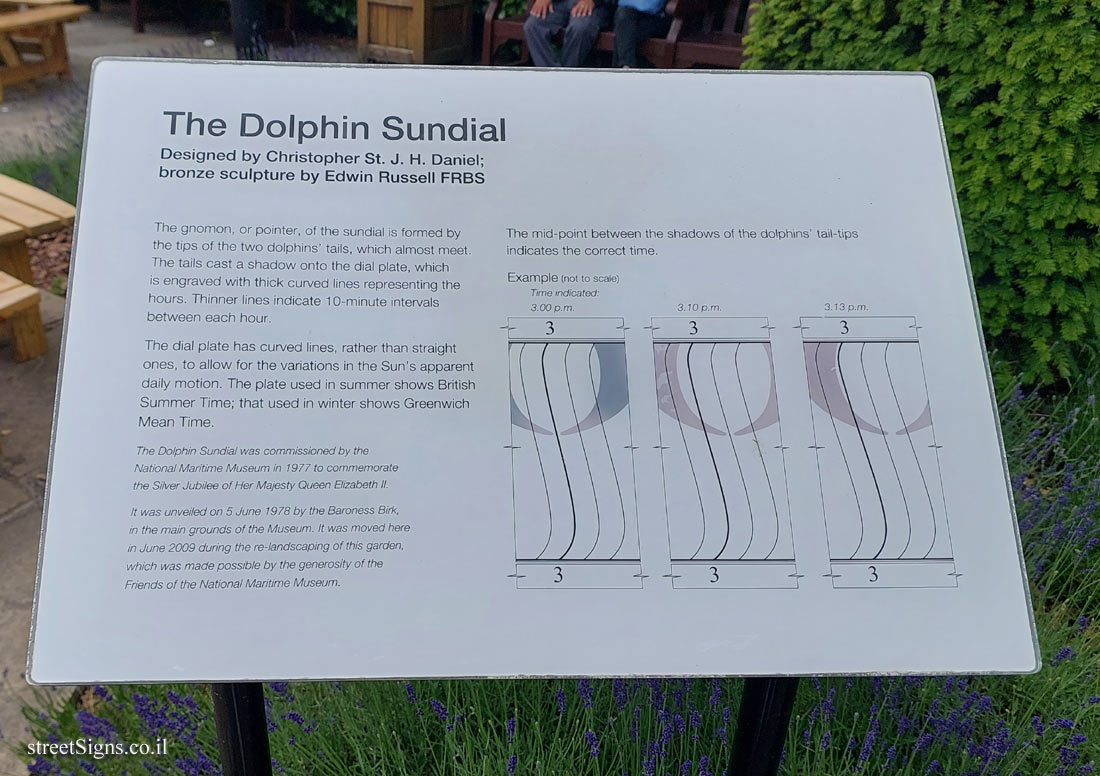The Sundial is in the Meridian Garden, a place where various historical measuring and observation instruments are concentrated.
The sundial which is actually also a sculpture was made by the artist Edwin Russell.
The sundial was taken on the same day
 Click for a larger image
Click for a larger image  Click for a larger image
Click for a larger image Next to the sign, there is another sign explaining the differences between clock time and sundial time
Sundials and solar time Clock time and sundial time often appear different. Clock time is based on the assumption that each day lasts for exactly 24 hours all through the year. In contrast, sundial time accounts for seasonal variations in day length caused by the Earth’s tilted axis and its elliptical orbit around the Sun.
When these two effects are combined, we produce the wavy pattern seen in the accompanying figure, known as the Equation of Time. When the curve is below the horizontal axis, noon on a sundial occurs several minutes after noon on a clock during these months. When the curve is above the horizontal axis, noon on a sundial occurs several minutes before noon on a clock.
The maximum difference between local solar time and mean (clock) time is 16 minutes and this occurs on 4 November. There are four days in the year when sundials and clocks coincide at noon: 16 April, 15 June, 1 September and 25 December.
[figure]
Sundial and clock time are the same when the curve crosses the horizontal axis.
 Click for a larger image
Click for a larger image
Learn about:



 Click for a larger image
Click for a larger image  Click for a larger image
Click for a larger image  Click for a larger image
Click for a larger image